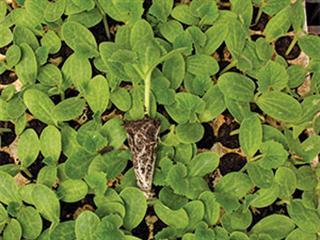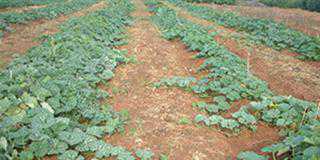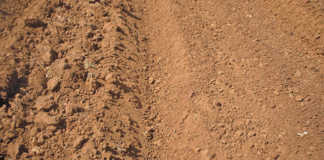
In the ‘old days’, when all pumpkins were open- pollinated varieties, the decision was much easier. Seed was so cheap that if you took a chance and there was indeed a late frost, you could simply replant on the same area without breaking the bank. With the high price of hybrid seed these days, the decision of when to plant can no longer be taken lightly. Let’s look at ways to get your crop in earlier and reduce the risk.
The first method is by using seedlings. This will enable you to grow your plants under cover in a warm environment. In this way, you can get a three-week head-start. By the time the seedlings are ready for transplant, you will be able to hold back on planting a little longer if you see a cold front on the way. On the other hand, avoid the common mistake of leaving the seedlings in the trays too long. This stunts the plants so that the advantage of getting in early is lost.
Leaf-root Imbalance
The best time to transplant a seedling is as soon as you can pull it and its plug, with a full root system, from the trays. Leaving it in the tray even a week too long makes a profound difference. The plug becomes root-bound, yet the leaves continue to grow rapidly. This creates an imbalance between leaves and roots.
Once transplanted, the leaves require a good deal of water. But remember that the roots are in a confined area with little movement of moisture from the soil into the plug. This causes stress, and the recovery period may nullify any advantage you hoped to gain by planting early. (Plugs, of course, are more economical for runner varieties as fewer plants are used for the area.)
Small leaves, Vigorous roots
At transplanting, the leaf area should be small and the root system young and still vigorous. The roots will then start growing into the soil immediately. With a relatively small amount of leaf area to sustain, they will become established quickly with very little growth check. Just before pulling, water the plants with a LAN solution – a handful of LAN in a watering can per 10 trays of seedlings. This will increase the fast rate of early development. For safety’s sake, irrigate with pure water just after applying the LAN.
When planting early, endeavour to plant on the highest lands possible – that is, those that have the lowest risk of frost and are warmer in the early morning. This may be stating the obvious, but planning for this has to start in the previous summer. All too often, the farmer thinks of this when it’s too late and the most suitable land is already occupied. The aspect of the land also plays an important role. North and north-west facing slopes are usually the best.
Keeping seedS moist and warm
When planting seed directly, consider soaking the seed overnight in lukewarm water, draining, and then keeping the seed moist by folding it in a damp hessian bag and storing it in a warm place until the seeds begin to germinate. This is when you see the tip of the radical (root) about to emerge from the seed. If the land is irrigated at the time you start to soak the seed, the soil should still be moist enough to plant the seeds without needing further irrigation after planting.
At this point, germination is complete and all you require is moist soil. Once the root penetrates, which it will do in about a day, it will continue into the moist soil and be sustained for some time before irrigation is necessary.
Contact Bill Kerr at [email protected]. Please state ‘Vegetable production’ in the subject line of your email.













